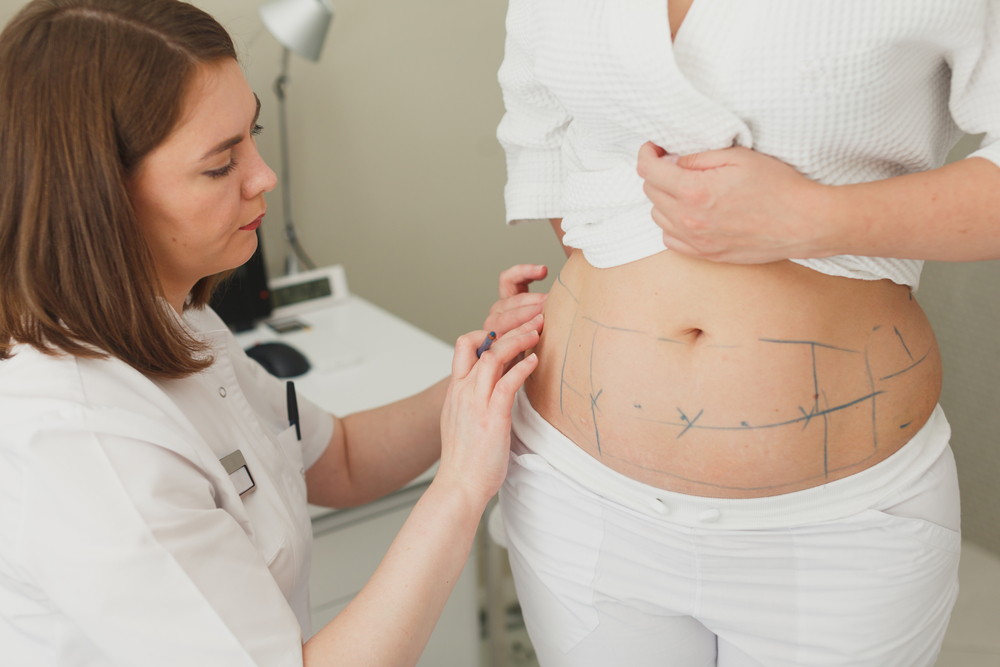
Treatment Overview
During liposuction, fats from the body are removed with the use of a small, thin, blunt-tipped tubes (cannula)which are inserted through tiny cuts in the skin. The doctor moves the tubes around under the skin to target specific fat deposits and suctioned it.
In recent years, techniques in liposuction have been improved that makes it safer, easier, and less painful. These techniques include:
Liposuction procedure can be done in a properly equipped doctor’s office, ambulatory surgery center, or hospital. Generally, the patient does not require an overnight hospital stay unless a large volume of fat is being removed. In some cases, local anesthesia is used. Sedatives may and may not be given although it helps the patient to relax. General anesthesia or deep sedation are only used when traeting a large area or volume of fat
What To Expect After Treatment
Why It Is Done
Liposuction’s main purpose is to reshape one or more areas of your body and not to reduce body weight. It is not used to treat obesity. It will not get rid of cellulite or stretch marks. You will likely to gain weight even after the procedure.
It’s typical used is to reshape “problem” areas that have not responded well to diet and exercise. The face, neck, abdomen, back, buttocks, legs, and upper arms are all commonly treated areas. Body parts that are often treated on women are the outer thighs and hips while the waist and back on men.
Liposuction is sometimes combined with other cosmetic surgery procedures, such as a “tummy tuck” (abdominoplasty), breast reduction, or face-lift.
Liposuction may also be used to treat certain medical conditions, including:
Liposuction is not used to treat obesity. It will not get rid of cellulite or stretch marks.
Risks
Risks of complications increases when you are having more than one area or a very large area treated. Nevertheless, liposuction done by an experienced doctor in a properly equipped facility is usually safe.
Common side effects of liposuction include:
Less common side effects include:
New fat can grow deep inside your body, around your organs, such as your heart or liver. This is the reason why you may gain weight even after liposuction. Fats may store in a different place than where you had fat cells removed. This type of fat can be more harmful to your body than fat that is stored near the surface of your body, such as on your hips or thighs. People who have liposuction need to be careful not to gain extra weight.
Dangerous complications
Serious complications may be brought by health problems or if you have a large amount of fat removed.
Although death is very rare with liposuction, it can happen. Possible complications include:
Liposuction is not advisable for people who have severe heart problems, have blood-clotting disorders (such as thrombophilia, a disorder in which the blood clots easily or excessively), or pregnant.
What To Think About
Only expert doctors should perform liposuction. Complications will be less risky if liposuction is not done at the same time as other cosmetic procedures.
Liposuction is not for people trying to lose weight. It will never be a substitute for exercise and a balanced diet. In fact, most cosmetic surgeons agree that the best candidates for liposuction are healthy people who are at or close to a healthy weight but who have stubborn fat deposits that do not respond to exercise.
Overview and FactsTypes and SymptomsDiagnosis & MedicationsOverview and Facts Tetralogy of Fallot is a congenital heart defect that affects the [...]
Overview and FactsTypes and SymptomsDiagnosis & MedicationsOverview and Facts Trichinosis, also known as trichinellosis, is a parasitic infection caused by [...]
Overview and FactsTypes and SymptomsDiagnosis & MedicationsOverview and Facts Trigeminal neuralgia is a neurological condition characterized by severe facial pain. [...]